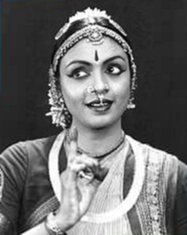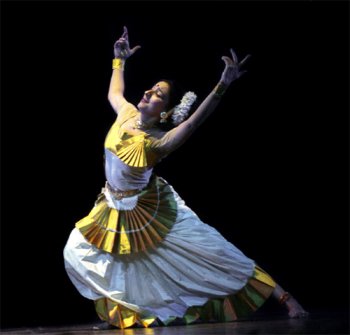
|   |

|   |
The IIC Experience - Dr. Sunil Kothari e-mail: sunilkothari1933@gmail.com November 21, 2012 This year, The India International Centre is celebrating its Golden Jubilee. IIC is an integral part of Delhi. The cultural activities round the year have gained a sharp focus this year in particular, bringing historical developments of the Centre in public domain. The exhibition titled Form and Spirit, IIC at 50, curated by Siddhartha Das bring archival material, interviews with members and architectural plans, reconstructing the early years of the Centre. The inaugural event of the festival (November 1 -7, 2012) was Genesis, Creation of Earth - legends of the indigenous people. Adapted form various Gond, Santhal, Bilal and Adivasi myths thousands of years old, the stories depicted how the earth was created and how life came into being. There was a humourous performance by the Ishara Puppet Theatre Trust directed by Dadi Pudumjee, using shadow puppets and other projection techniques to adopt indigenous art form. The classical dance forms included Bharatanatyam by Priyadarsini Govind and Mohiniattam by Vijayalakshmi.  Priyadarsini is a seasoned artiste, at the peak of her career. She brings to bear upon her recital, freshness with chosen dance compositions. For the celebration, she had chosen poems from ancient Sangam literature. These poems look at the issues of love, war and social values of that time and yet appear contemporary with universal appeal. The two sections were Aham and Puram. As explained, Aham deals with inward journey emphasizing on theme of love. In three verses Priyadarsini depicted facets of love. The nayika says to the nayaka that their love is wider than earth, higher than sky, sweeter than Kurinji flower which blossoms once in twelve years. Of course these images are transformed through the language of facial expressions and hand gestures to Carnatic music, evoking mood. In another verse, the nayika questions about their relationship. Effusive and bemused, she wonders what is her mother –and his to each one of them. And in the third verse, she laments the weakness of her fragile heart. When the lover leaves her and goes on a journey to earn money, she wonders what matters most? The love or money? In a composition which she performed in a format of a varnam in Todi raga, the nayika speaks of her heart yearning for the lover, being tossed like a rock in waves, foolish heart, what are you seeking? The nritta passages of pure dance alternating the lyric had a few arresting movements, with circular jumps, utplavanas, Priyadarsini landing perfectly on the beat, the onomatopoetic sollus, and mnemonic syllables giving interesting aural texture. With a lithe, tall, vibrant figure, long arms, Priyadarsini wove geometrical patterns with ease. The sancharis, improvisations and elaborations for depicting agony of separation was conveyed through the nayika’s losing appetite, her body becoming weak, even the bangles falling down from her wrists, she turning weaker and weaker, since the nayaka left her. They were communicative and were performed with economical, minimal abhinaya. What lingered long in memory was the section of Puram. It referred to the values of valour, heroism and pride. The times of war were enacted with expansive movements. The march of elephants, the sound of bugles, the foot falls of the soldiers, created by imaginative use of drum, violin, evoking sense of war and the story unfolding centred round a mother who brings up her son as a warrior, sends him to war even after her husband is killed. When questioned by other woman what sort of bravery is this, that you knowing well what war would bring, sends your son to war? The proud mother trains the young son, impressing upon him the determination to go to war and fight. When the sad news comes to her about the impending doom and she is given to understand that her son was killed when he was running away with an arrow in his back, she is shell shocked and runs to the battle field. Looking for the dead son amongst the corpses, she finds that he was not killed with an arrow in his back but was wounded in the chest and was certainly not running away from the enemies. Her heart is filled with pride for her son’s courage. But her mother’s heart is filled with pain, agony having lost him. She recalls how she had brought him up, embraces him, singing a lullaby. On that poignant note, Priyadarsini concluded the performance. It left a deep impact. Her musicians Anis Ram (vocal), K S Balakrishnan (nattuvangam), Deepu K Nair (violin) and Ramakrishnan (mridangam) gave her excellent support. Indeed very unusual and different performance with emphasis on other rasas like veera and karuna.  On 5th November, young Mohiniattam exponent Vijayalakshmi presented a collaborative, innovative work ‘Rain’ based upon poet Sudeep Sen’s few poems. He wrote the script and co-directed it in consultation with Vijayalakshmi, exploring common elements of poems and the kinetic movements of the Mohiniattam dance form. It was a layered production with poetic images woven by Sudeep Sen to which Vijayalakshmi wove dance images of rain. To the recorded music covering sound of thunder and rain, the evocative lighting and Naresh Kapuria’s set design, Bharati Shivaji’s dance consultation, Vijayalakshmi with typical graceful and fluid movements of Mohiniattam danced reacting to various moods of rain with different genres of music. The recitation by Sudeep Sen of the poems was well modulated. Besides English passages, there was also Hindi description of magical rain, Jadui barish, the enchanting quality, sammohini, and Vijayalakshmi attempted to create rainy season to the strains of sitar, feeling of rain falling. Interesting stanzas were of air conditioner and rain: ‘Isolated amid the air-conditioned comfort, vast well-cleaned concrete spaces, and the shelter of tropical profusion, I feel completely cut off from the hustle and bustle of metropolitan living I have been used to for decades…. It is cold in this room, the chill keeps me awake... it is raining again, beautiful kind of rain, steady, symmetrical, confident and unobtrusive…’ and so on. The love for nature was reflected movingly. The word images were impressive. In one sequence of rainy season, Vijayalakshmi showed a nayika is overcome with bashfulness and tries to disentangle herself from beloved’s hand. That was a lovely cameo. It was enacted with complete involvement and suited the Mohiniattam style. F Wasifuddin Dagar's composition in Dhrupad in Malhar raga was quite interesting as the dance movements and movements of peacock to the mnemonics brought in different texture. Carnatic, Bengali folk, Rabindra Sangeeet, Sopanam music, appropriate evocative backdrop of Kerala and Rabindranath Tagore’s Bengal, lent pleasant touches to the production. The mixing was done by Los Angeles based multi-instrumentalist Mac Quayle. The Bengali folk tunes and Gurudev Tagore’s ‘Man mora megher sange ude chale dig digante nissim sawan barse’- my mind flies with the gatherings of the clouds in various directions and boundless is the sky, and it rains, etc - were catchy and the movements of the peacock reflected the joy through words and body. The poet describes the rainy season of Bengal with poetic imagination. The lotus flowers blooming, suggested with bhramar hastas, showing bees hovering, Vijayalakshmi in one sequence sat on the floor and moved in a circle looking upwards at the sky, at the clouds and expecting rain, and three other dancers performed on a raised platform, enhancing visual appeal. To the stanza ‘raining violets’, effective lighting was charmingly employed. To suggest Kerala, a lady holding a decorative huge umbrella stood in a corner. To the playing of chenda, the cylindrical drum, rain was suggested and also the peacock’s joyous dance. Along with the celebrations of nature, the human beings and birds danced happily in rainy season. There were some gaps between the scenes, when Vijaylakshmi made exit and returned. That needs to be avoided as it broke the continuity. In a way, in place of shringara rasa, the erotic mood only, the evocation of different moods was attempted to explore the poetry and the visual poetry of dance. The collaboration with the poet, the musicians, the light designer, the set designer and the dancers was praiseworthy. Some loose ends could be tied up with more rehearsal in a proscenium theatre. Vijayalakshmi’s attempts to choreograph different themes are welcome in Mohiniattam. With several dance performances taking place simultaneously during the same time frame, one could not attend all performances at IIC. IIC wore a festive look and as usual there were different dinners every night of various regions including dishes from Turkey. The Turkish folk dances, I am told, were received very well, as they added variety and they performed with their usual flair. The IIC experience had several film screenings, also book launches and one morning Hindustani vocal recital by Prof. M. Venkatesh Kumar from Dharwad. One evening, the young violin duo from Chennai, brothers Ganesh and Kumaresh, regaled the audience with Carnatic music. IIC wore a festive look heralding Diwali. It indeed was a befitting cultural fare on the occasion of its Golden jubilee. Dr. Sunil Kothari is a dance historian, scholar, author and a renowned dance critic. He is Vice President of World Dance Alliance Asia Pacific India chapter, based in New Delhi. He is honored by the President of India with Padma Shri, Sangeet Natak Akademi award and Senior Critic Award from Dance Critics Association, NYC. He is a regular contributor to www.narthaki.com, the roving critic for monthly magazine Sruti and is a contributing editor of Nartanam for the past 11 years. |